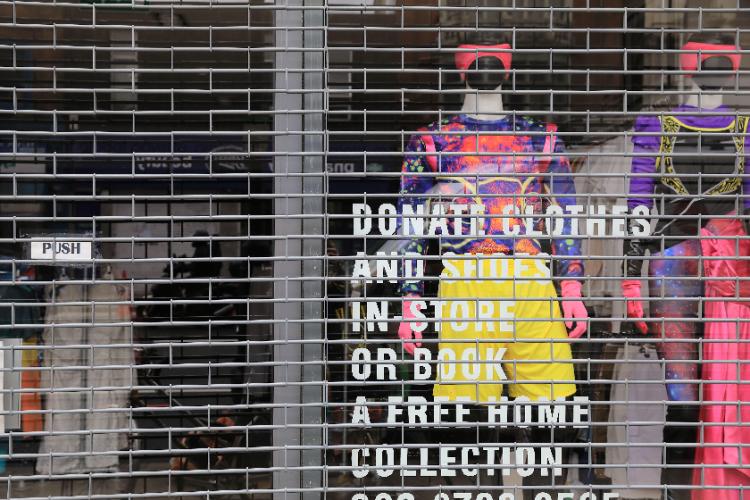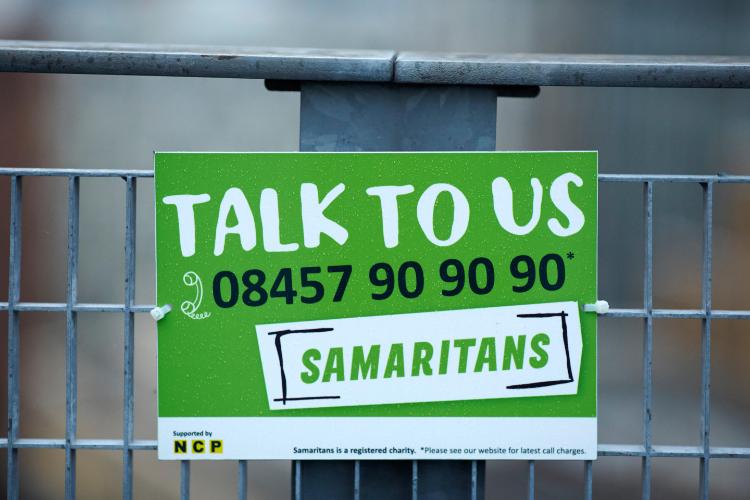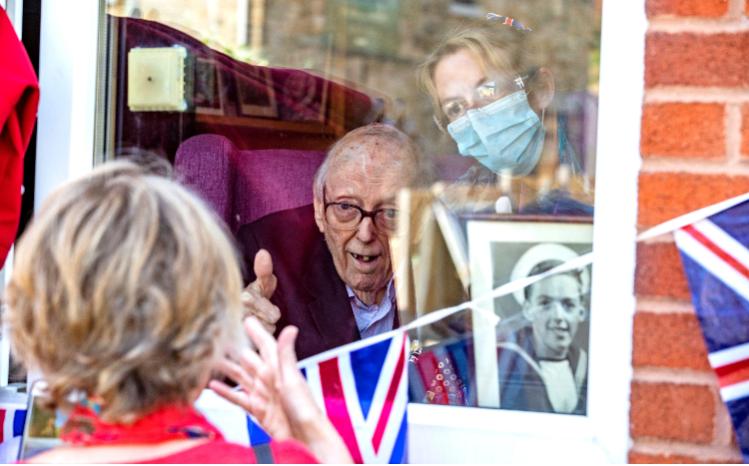“Cuts To Life-Saving Research Are Unavoidable”: How The Pandemic Will Have A Devastating Lasting Impact On Charities
14 min read
The charity sector has been hit twice over by the coronavirus pandemic. As most income sources vanished overnight, the demand for charity’s services became more vital than ever before.
But as we start to find a way out of the UK’s third lockdown, it looks like that struggle may only just be beginning.
Prior to the pandemic hitting in March 2020, the country’s charitable organisations were in pretty good shape. Research from the National Council for Voluntary Organisations found that in the year before the pandemic the sector’s income hit £53.5 billion, 47% of which came from public donations.
But, the picture wasn’t perfect. 59% of charity leaders told the Charities Aid Foundation in 2019 that fundraising was their biggest concern, with increased demand for their services (33%) and a drop in government funding (32%) coming up second and third.
Part of that anxiety stems from the fact that, according to research by the University of Southampton and the University of Birmingham, 21% of charities surveyed had just one months expenditure in reserves.
On average, charities had just 3.92 months of cash saved up, meaning that some organisations could be forced to shut their doors in a matter of weeks if donations suddenly dried up. And that is just what happened a year ago, when Boris Johnson announced that the nation would be going into lockdown.
And that is just what happened a year ago, when Boris Johnson announced that the nation would be going into lockdown.
One of the biggest initial casualties was the high-street charity shops. Age UK claims it lost £900,000 for every week its 400 charity shops were closed, while the British Heart Foundation (BHF) said shutting its 730 stores played a huge part in the charity’s 50% drop in income year-on-year.
The cancellation of mass-participation events was also a blow. Moving online, the London Marathon’s 2.6 Challenge did manage to raise £11.2 million for charity in April last year, but this was far from the £66.4 million donated overall in 2019.
“We had to cancel mass fundraising events in 2020, which included our Race for Life series of over 380 events across the UK, typically raising over £30m each year, and we’ve been forced to close nearly 600 shops for months during national lockdown,” said Michelle Mitchell, chief executive of Cancer Research UK.
“We’re predicting a drop in income of £300m over three years."
- Michelle Mitchell, chief executive of Cancer Research UK
“We’re predicting a drop in income of £300m over three years. With such a significant shortfall in income, we can’t afford to keep spending at the same levels. Cuts to our life-saving research are incredibly difficult, but sadly unavoidable.”
Meanwhile, care charity Marie Curie, which provides support for those living with terminal illness, said the loss of income had been “devastating” for the hospice sector.
“We spent about £165 million on our core services across the previous financial year, and about 70% of that comes from the charitable income we get,” Mark Jackson, the charity’s policy manager for England, told PoliticsHome.
“It's around £2.5 million a week we need to raise to carry on providing the care and support that we provide to people affected by terminal illness. So the fundraising is a really, really crucial element for us.”
Online fundraising campaigns and other innovations did manage to keep the lights on for many organisations. The British Heart Foundation (BHF) began selling clothes via its eBay story in a bid to raise funds, and received half a million pounds in postal donations during lockdown.
But, for smaller charities which lack name recognition or cover less well known areas, digital campaigns weren’t always a viable option.
“People don't know what lupus is so it's very hard to raise donations unless people have got a connection to it,” said John Hibbs, founder and chairman of the Hibbs Lupus Trust.
Unlike larger organisations, however, Hibbs family’s foundation had very few overheads. The operation runs out of John’s spare bedroom and their Starling Bank business account has no fees, meaning their only current costs are running the website and making care packages for those shielding.
“Raising money has really only ever been a bonus for us anyway,” he said. “It keeps the lights on in terms of the websites and things that we might donate to hospitals, in terms of equipment and support that they need, but really, we've always been about the awareness and providing the support.”
Very few charities are in that position, however. While their reserves slowly depleted, many have faced an unprecedented rise in demand. A survey by Pro-Bono Economics found that 63% of charities had seen a spike in demand.
Food bank charity Trussell Trust saw a 47% rise in usage in just the first six months of the crisis, and listening service Samaritans says it’s spoken to 2.3 million people in the last year alone.
"As our income suffered, the need for our services and campaigning skyrocketed," said Louise Rubin, Head of Policy at disability equality charity Scope.
"Two thirds of those who lost their lives to Coronavirus were disabled, and a year of stripped support for finances, health and social care has made disabled people feel like their lives are expendable."
Smaller charities have also borne the brunt of the crisis, with domestic abuse charity Surviving Economic Abuse reporting an 85% rise in website visits overnight after the first lockdown was announced.
“Demand is higher and, paradoxically, that's happening in a time where it's more difficult for victims and survivors to come forward,” said founder and CEO Dr Nicola Sharp-Jeffs.
“Demand is higher and, paradoxically, that's happening in a time where it's more difficult for victims and survivors to come forward"
- Dr Nicola Sharp-Jeffs, CEO Surviving Economic Abuse
Unusually, the organisation, which has 27 employees, has managed to expand its services during the pandemic, largely due to a round of government funding issued last summer.
“There was a number of emergency pots which we applied to and we're successful in receiving funds from which has enabled us to grow over the last year to start to meet that increased demand,” she explained.
“But they're coming to an end, or they have come to an end, and there's been no announcements around continuation funding."
Dr Sharp-Jeffs added: “I know a lot of organisations in the sector who are on a bit of cliff edge with the new financial year starting, and are yet to actually receive confirmation from any statutory sources that any kind of funding will continue.”
Alongside £76 million in emergency funding from the government in May — some of which went towards domestic abuse charities like Surviving Economic Abuse — charities were also able to weather the storm by using the job retention scheme.
Early evidence suggests that there hasn’t been a huge trend in charities folding, and it’s assumed that the furlough scheme is largely to thank for that.
"We'll find once the furlough scheme ends whether or not that's going to be a lasting solution or whether it's actually just delayed the closure of these charities."
- Andy Frain, policy and campaigns manager at the Charities Aid Foundation
“If you asked everyone last April, I think a whole load of charities would have said this is existential,” said Andy Frain, policy and campaigns manager at the Charities Aid Foundation (CAF).
“Things like furlough have managed to put a sticking plaster on that. We'll find once all that support ends whether or not that's going to be a lasting solution or whether it's actually just delayed the closure of these charities.”
He added: “Charities are a bit like businesses to that extent, in that there'll be a whole lot of businesses you haven't been able to operate and some had their income streams cut off.
“But we haven't yet seen a massive boom in businesses shutting down over the last year. And part of that is because of government support and part of that is because, actually, it turns out we can work more flexibly than we thought.”

The sector's problems, however, are unlikely to go away as coronavirus restrictions lift and fundraising resumes. In fact, in many ways they are only just beginning.
Repeated lockdowns have impacted the health and wellbeing of much of the UK, with serious illness going undetected and existing ailments only getting worse.
“We know that one in four people who have died from COVID have had dementia. People with dementia who live in care homes have obviously had an awful year and had very little social contact,” said Hilary Evans, chief executive of Alzheimer’s Research UK.
“But also people living at home with dementia haven't had the normal kind of social contact they haven't had maybe the normal levels of care. And what we're seeing is actually their dementia is getting a lot worse because of that.”
Hannah Pearce, head of external affairs at Age UK, agrees. She said: “The physical and mental decline of older people over the last year is just huge because people who haven’t been able to keep active, keep moving, keep walking and have been stuck in the houses for months and months, will have gone through quite a serious physical and mental decline. The kind of long term impact for those people will be huge.”
Meanwhile, the BHF fears the effects of a growing backlog in treatment and care for people suffering with heart disease.
A combination of people being reluctant to call 999 when they’re experiencing symptoms of a heart attack and many sufferers having ongoing treatment delayed means the NHS faces a monumental task as the latest lockdown is lifted.
“Survivors have told us how the pandemic has worsened abuse and made it harder to reach out for help."
- Farah Nazeer, chief executive at Women's Aid
Domestic abuse charities are also gearing up for a spike in demand once lockdown lifts. “Survivors have told us how the pandemic has worsened abuse and made it harder to reach out for help,” Farah Nazeer, chief executive at Women's Aid, explained.
“We are anticipating that after lockdown ends, more survivors will need to access support and escape their abusers. When perpetrators feel they are losing control over the survivor, the abuse very often escalates, and this will put survivors at further risk of harm.”
“So, it is essential that the government, the public sector and specialist support services are prepared for a surge in demand for support.”
And then, there’s the impact on medical research. Slashed funding and stretched resources mean many organisations have been forced to dial back the distribution of vital grants, used to find treatments and cures for everything from diabetes to leukemia.
“If we don’t find further financial support, we will need to make further cuts to our research budget every year for the next four to five years,” Mitchell, of Cancer Research UK, told PoliticsHome.
“Across the UK, this could mean spending £150 million less per year by 2024 than we’d originally planned.
Other organisations such as Alzheimer’s Research UK and the British Heart Foundation said they were in similar situations.
While they have been able to continue funding ongoing projects, the amount committed to new projects has been cut drastically due to the effects of the pandemic.
"During the first wave of the pandemic our researchers lost around 230,000 hours in the lab."
- Baroness Delyth Morgan, chief executive at Breast Cancer Now
“The COVID-19 pandemic is the biggest crisis that breast cancer has faced in decades, and has majorly impacted thousands of people affected by the disease,” said Baroness Delyth Morgan, chief executive at Breast Cancer Now.
“During the first wave of the pandemic our researchers lost around 230,000 hours in the lab and we are now less able to fund new research that could transform the lives of people affected by breast cancer.”
Meanwhile, Evans, of Alzheimer’s Research UK, warned that a failure to fund new projects could see an exodus of talent from the research sector.
“It's about finding the next generation of scientists, who often rely on relatively short grant periods, and suddenly there's been a huge drought from not just our organisation, but a lot of other scientific funders,” she explained.
“And what we don't want to see is the progress being made in dementia slipping away because actually scientists have to go elsewhere for funding.”
It’s for this reason that the BHF’s Dr Griffiths, is calling for the government to back an initiative to help maintain the research investment pipeline.
“We've worked really hard with other charities to lobby for Life Sciences Charity Partnership Fund, because this issue is way bigger than the BHF medical research charities are a huge part of the research, life sciences R&D ecosystem across the UK, and we're deeply concerned that the drop the cliff edge in funding that we'll all face, and will mean a dramatic drop in funding for the research community.”
So, how long will it take for charity operations to return to normal? Dr Griffiths predicts it could be “several years”, while Evans says her organisation believes it will be “broadly within 18 months”.
But, ultimately, how charities fundraise and operate in the future may never fully be the same. A November 2020 poll by CAF found that almost half of UK charities (47%) had already changed the way that they fundraised as a result of the pandemic.
A separate CAF poll in February 2021 also found that around 3 in 5 small charities felt optimistic for the year to come, though concerns about operating challenges still persisted.
“Charities are feeling much more optimistic now about the year to come. Bright skies are, in theory, ahead,” Frain said.
“Although, a healthy chunk of again it comes down to the fact that there's haves and have nots in this whole scenario. Some charities are thinking, brilliant, we've managed to weather the storm. Onwards and upwards.
“While other charities are much, much more pessimistic and have really been pushed to the brink.”
“Charities are feeling much more optimistic now about the year to come. Bright skies are, in theory, ahead"
- Andy Frain, policy and campaigns manager at the Charities Aid Foundation
A spokesperson for the Department for Digital, Culture, Media and Sport said: "We're continuing to provide a multi-billion-pound package of support for Britain's charities, including through our dedicated £750m investment which has helped more than 15,000 organisations support vulnerable people and provide key service.
“By securing match-funding we've ensured this money will go further and last beyond March, with equipment purchased and service adaptations benefiting people across the country in the longer term.
“We are continuing to monitor the situation closely to understand where pressures are being felt and how we could further support charities in doing their important work."
